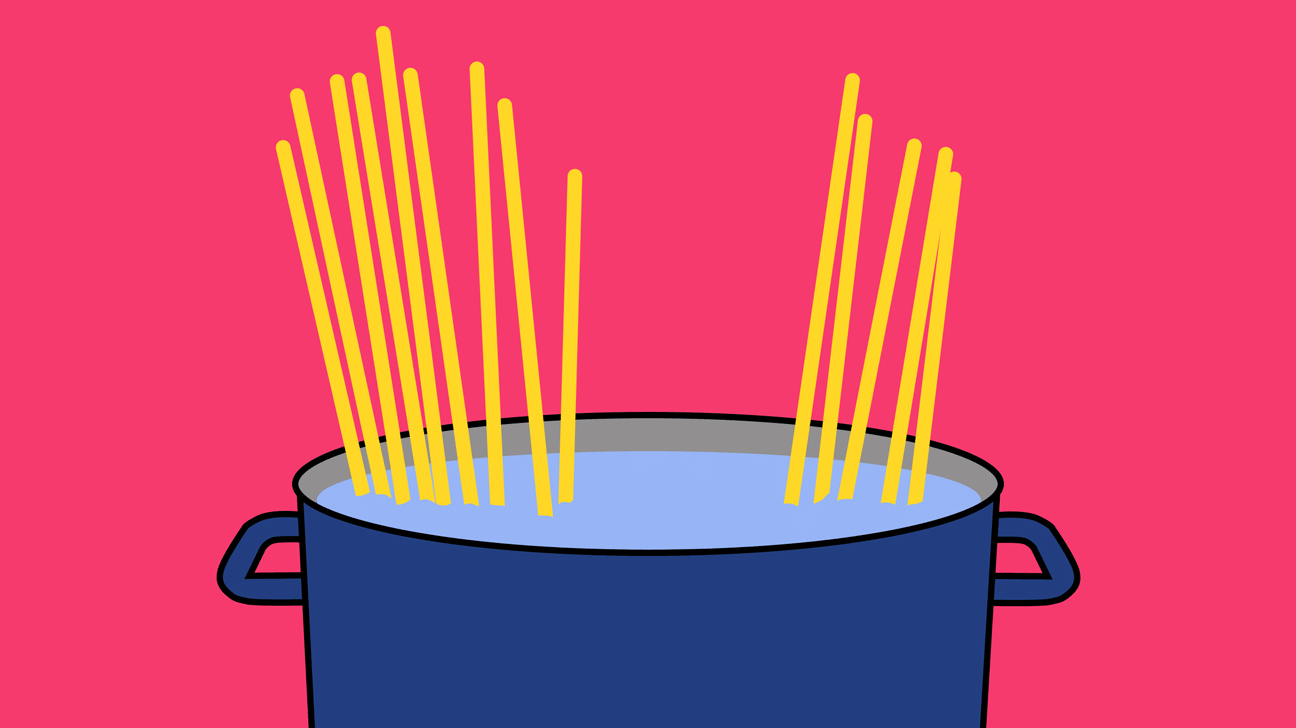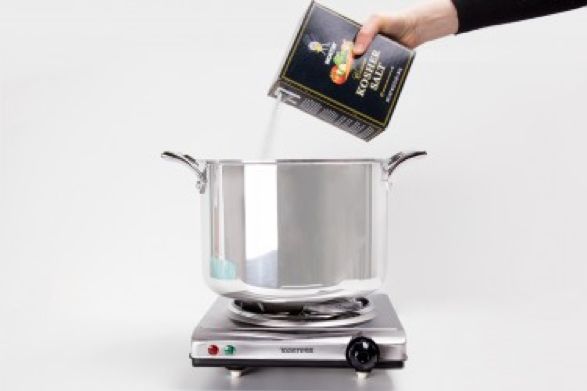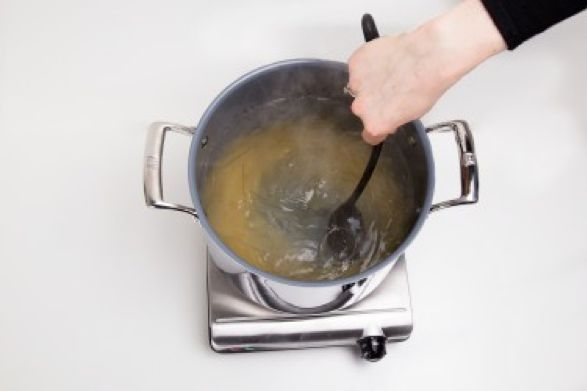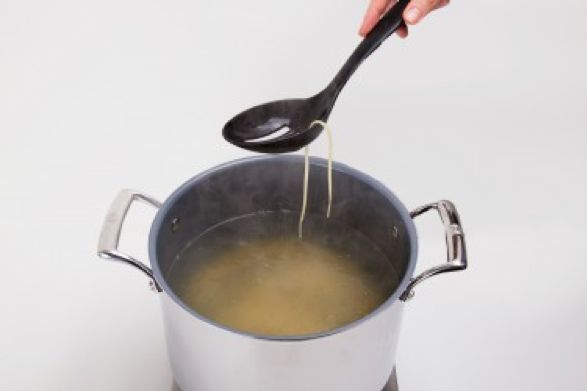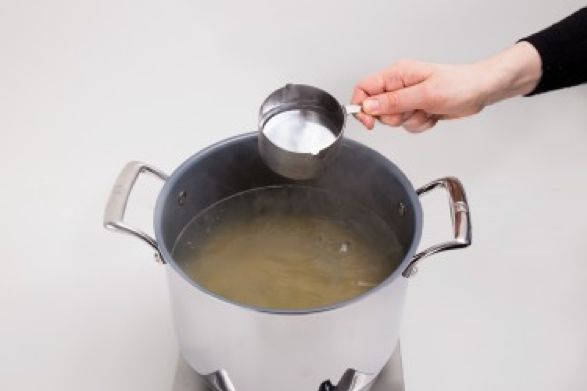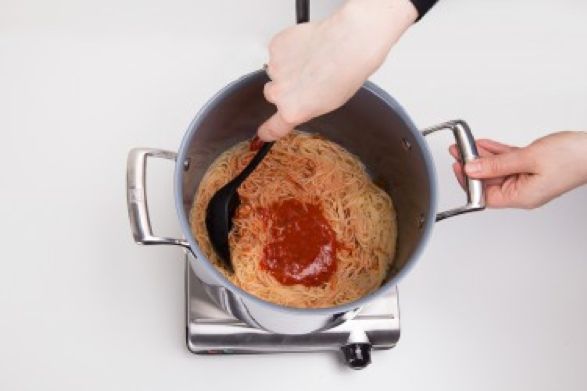We include products we think are useful for our readers. If you buy through links on this page, we may earn a small commission. Here’s our process.
Greatist only shows you brands and products that we stand behind.
Our team thoroughly researches and evaluates the recommendations we make on our site. To establish that the product manufacturers addressed safety and efficacy standards, we:- Evaluate ingredients and composition: Do they have the potential to cause harm?
- Fact-check all health claims: Do they align with the current body of scientific evidence?
- Assess the brand: Does it operate with integrity and adhere to industry best practices?
The formula for pasta seems oh-so-obvious. Water + pasta = dinner — right? But sometimes the supposedly simplest things prove to be the trickiest.
It turns out the window for pasta perfection — not stuck together, and neither mushy nor hard in the center — is slim. And then there are all the other factors to consider. Should you add salt to the water? Or oil? What about a cold-water rinse at the end?
If your head is spinning, take a deep breath and let go of the pasta panic. We’ve assembled the best, and easiest, tips for cooking excellent pasta every time.
1. Use a large pot
Pick a roomy pot that gives the pasta plenty of space to move around in. This is a good time to call that eight-or 12-quart stockpot into action.
2. Load up the pot with lots of water
You want five or six quarts of water for a standard 16 oz. package of pasta.
When you’re hungry and want to get to spaghetti time stat, you might be tempted to use less water, so it boils quicker. Don’t. Just like pasta needs a roomy pot, it needs plenty of H2O to totally submerge every strand.
Here’s a tip for making the water boil faster. Put a lid on the pot, but keep it partially uncovered so you’ll hear when the water starts to boil. Leaving a gap will also help keep the water from boiling over before you turn it down.
Ever had a covered pot boil over? We have — very stressful.
3. Salt the water
Salt it good! Don’t just give a single tap of the shaker — you want at least a tablespoon for 6 quarts of water. In fact, a chef we know uses 2 tablespoons of coarse salt for 6 quarts of water! While many people suggest making it sea-water salty, that’s actually too salty! Slightly less salty than the sea is best.
But the salty water is essential because it boosts the pasta’s flavor.
4. Bring the water to a full, rolling boil
Again, don’t let hanger make you dump in the pasta when the water is at a mere simmer. You want a vigorous boil. Remember, the pasta is going to cool down the temperature of the water once you drop it in. To bring the water back up to a boil more quickly, put the lid back on.
But the second you hear the water boiling again, take off the lid, and…
5. Stir to keep the pasta from sticking
Don’t stray from the stove to check Insta or see what people are tweeting, or settle in to rewatch another episode of Game of Thrones. You’re on pasta duty, people! Stand guard and stir the pot at least two or three times during cooking.
Don’t let the strands clump. They should swirl, unencumbered and free.
6. Test the pasta two minutes before it’s “ready”
Check the pasta packaging for the cook times. This is where it gets tricky. Ever notice that the instructions give a range of time? For instance, regular dry spaghetti takes between 6 to 8 minutes. Or is that 5 to 7 minutes? Or 10 to 12? Depends on the package and the pasta.
(If you’re cooking at high altitude, that adds yet another variable.)
Start checking the pasta’s doneness on the earlier range of the time frame. Fish out a single strand of pasta using a pasta fork (or whatever — we find a pair of chopsticks is perfect). Let it cool, then bite into it.
How does it feel on your teeth? Does the center resist just enough or is there still a bit of a crunch? Does the pasta have a springy bounce to it? That’s what you want.
Unless you love it softer — sometimes a bowl of slightly soggy noodles tastes like home. But no matter your preference, it’s better to err on the side of al dente because you can fix that if a not-quite-cooked texture isn’t your thing (instructions below).
7. Save a scoop of pasta water
Once you think the pasta is cooked to your liking, take two seconds to do this little step that most home cooks skip: Before you drain the water, scoop out a cup or two in a Pyrex measuring cup or really anything that won’t crack.
This starchy water can work wonders in sauces, to either bind the sauce and pasta together, or to thin down thicker sauces so they’ll coat the noodles.
8. Drain, toss with sauce, and serve hot
Place a colander in the kitchen sink and drain your pasta. Put the drained pasta back into the pot with sauce (or into the saucepan if the sauce is still cooking and the pan is large enough), add your pasta water, and toss to evenly coat. Serve piping hot.
How to fix undercooked pasta: If there’s more bite than you like, put it back in the pot with your saved cooking water (see below), add your sauce, and cook over medium high heat for an extra minute or two. Bonus: The sauce will bind with the pasta and create a new kind of yumminess.
Pasta perfection tips
- Cooking times can vary according to pasta shape, amount, and type (whole-wheat, gluten-free, etc.). Use the suggested cooking time on the package as a suggestion, not gospel.
- Unlike dried pasta, fresh pasta takes only two or three minutes to cook, max. It’s trickier to cook than dried, so save it until you’ve got dried down.
- Stuffed pasta, like ravioli, will rise to the surface and float when ready.
- Don’t add oil to the pasta water. Some cooks are under the false assumption that a glug of olive oil will keep the strands from clumping. But that’s nothing a good stir won’t solve, plus oil could leave your pasta too slick for the sauce to cling.
- Don’t rinse your pasta when it’s done cooking. That washes away all the happy starches that bind it to the sauce.
Now that you’ve learned the classic method, we’re going to blow your mind with this new way of cooking pasta in a sauté pan with a small amount of water. It totally defies everything we’ve ever been taught!
